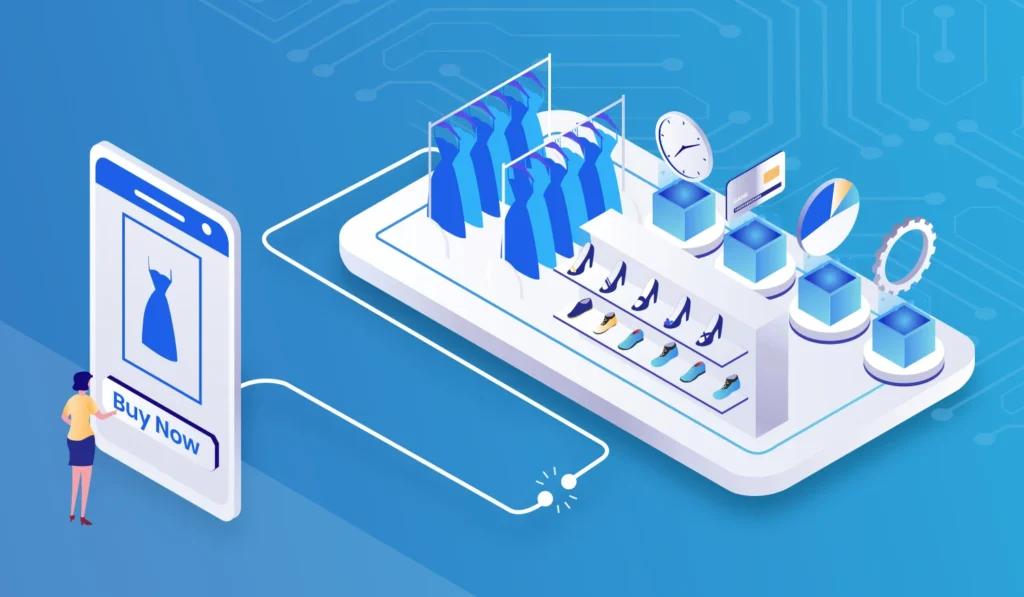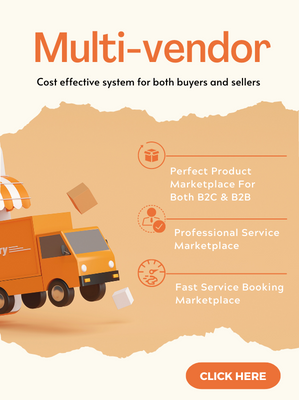As an eCommerce business, you might feel like things are more of a struggle for you than if you run a brick-and-mortar shop. To overcome these eCommerce challenges, your businesses should operate as modern omnichannel retailers. They need to focus on turning data into insights, knowledge, and ways for market leadership. Inspiring customers and driving loyalty with personalization at scale can work in their favor and can help support their brand, business model, and international expansion.
In this post, we’ll offer solutions to 12 common ecommerce business challenges so you can identify them, solve them, and get back to running your business.
1. D2C retailers are your biggest competition
The ecommerce business age has leveled the playing field for (D2C) business. Direct-to-consumer retailers manufacture and deliver their products directly to customers without relying on traditional stores or other middlemen. This allows D2C retailers to sell their products at lower costs than traditional consumer brands, and to maintain end-to-end control over the making, marketing, and distribution of products.
Unlike their traditional competitors, D2C brands can experiment with distribution models, from delivery directly to buyers, to partnerships with physical companies, to opening pop-up shops. They don’t need to depend on traditional retail stores for exposure. If your ecommerce business is traditional retail, you run the big challenge of being outperformed by manufacturers who can send their products directly to eCommerce sites.

2. SEO is getting more complex
Nowadays, Google’s algorithms are so much more complex. They also prioritize user experiences, which means the website that rank the highest are the ones with the best performers, not the websites that are optimized for just keywords. Moreover, Google and other search engines change their SEO algorithms all the time. This means that you have to know what has changed and what has updated the same. The search engine crawlers are smarter, too. They know to seek for keyword stuffing, poor quality content, and much more. It means that you have to be more creative and keep on top of the content that is posted on your website
Besides, an enormous rise in voice search will require a whole different optimization approach. More than half of all searches will be conducted by voice this year, so if you’re not regarding about voice search optimization in 2020, you’re going to be left behind.
3. Written product descriptions are obsolete
Online shoppers still want as much product information as possible when they shop and compare products online. But in 2020, they don’t want to read that information.
60 percent of customers would rather watch a video about a product than read a description of its functions and benefits. That’s why, in 2020, ecommerce business should be included comprehensive videos for product pages, combining how to use the product, why a shopper needs it, and any other information that might be relevant to the shopper
4. AR will become more popular
Some of the large ecommerce business, like IKEA, Wayfair, and LEGO, are already taking benefits of the ways that AR can assist customers better visualize before they make a purchase. AR is an effective investment that’s still out of reach for a lot of small brands, but this is the year that’s likely to begin to change. When AR becomes a more expected part of the online shopping experience, ecommerce business will have to offer AR experiences for their shoppers to keep up.
5. Headless Commerce

With that rise in API shopping and IoT commerce, retailers need solutions that assist them to adapt to how their information is shown to shoppers fast and as often as crucial to take benefits of emerging new channels. In 2020, Many ecommerce businesses will need to consider the headless commerce architecture and take advantage of new technology.
In its simplest form, headless commerce is a separation of the front end and back end of an eCommerce application. This architecture offers brands freedom of expression to build whatever and however, they want. Most importantly, it enables brands to enrich the customer experience
6. Borderless Ecommerce
In the ecommerce business age, shopping is becoming borderless. 57 percent of online customers already engage in “cross-border” shopping, buy from businesses that are based outside of their home countries. The challenge here isn’t just figuring out the logistics of overseas delivery. International customers also want product content that’s fully updated and contextualized for where they live. That means it’s up to ecommerce business to build, manage, and organize product information in multiple languages (combine local dialects and slang), various currencies, measurement units, and more exclusive factors relying on the markets they sell to.
7. Social shopping is the new norm
Ecommerce business have long used social media to advertise and promote their products. But in recent years, social shopping has developed to assist shoppers to make purchases directly from their preferred social media sites and apps.
This has shortened the purchasing process and enhanced the comprehensive customer experience, so many businesses will need to lean into social shopping in 2020. The retailers will keep innovative with shoppable ads and posts on as many social media platforms as possible.
8. Competing against retailers & manufacturers
Many eCommerce business buy their products from retailers and manufacturers. Unluckily, these retailers and manufacturers also sell the same products directly to customers. so the same company that sells your products may also be your competitor. So how can this be solved?
- Give priority to manufacturers less likely to sell directly to customers
- Provide the goods at a lower price or with additional benefits to boost sales.
- Involve a statement in your contract that restricts the manufacturer from selling directly to customers.
9. Data Security for Ecommerce business

Security problems can lead to nightmare scenarios. Fraudsters post spam and attack the web host server, infecting the online store with viruses. They can potentially gain access to confidential data about your customer’s phone numbers, card details, etc. Breach of credit and debit card details have become common issues, and such lapses directly affect the trust of a consumer. Some customers are increasingly concerned about the websites’ capability to efficiently shield their personal identity as well as the security of the transaction details.
- Install an SSL certificate
- Firewall software and plugins shelter from SQL injections and cross-site scripting and are also an effective method to evading suspicious networks while allowing only reliable traffic on online stores.
- Use trustworthy modules that secure the checkout and transaction: Secure Pay, Sage Page, etc.
- Manage your own servers
- Frequently back up and restore your data in case it gets stolen.
- Install security plugins when possible to prevent your website from getting hacked. For example, if you have an eCommerce website based on Magento, installing a Magento extension can significantly boost security
10. Shopping cart abandonment
Shopping cart abandonment is a huge problem for selling online. Even e-commerce giants are not immune to this problem.
Solution:
- A slow-loading website can frustrate the customers and they may leave your site without purchasing. Your store should maintain a fast loading speed where each takes less than 3 seconds to load. There are many online tools that can help you figure out the bottlenecks and improve the speed of your website.
- Consider redesigning your shopping cart page and ensure there is no bugs or complex and inconvenient form filling process.
- Live chat is one of the best solutions to reduce shopping cart abandonment. Besides, combining this feature with the user’s segmentation also allows you proactively to connect to visitors during key stages of their journey. As a result, you can have the opportunity to engage with customers who would otherwise drop out without purchasing
- Leave no hidden cost for the purchase tab
- Offer more than one shipping carriers
- Offer free shipping
11. Omnichannel customer experience
In today’s world, shoppers can reach out through any number of touch-points. They may visit your online store, contact your agent, leave a message on your social media page, purchase from your website, or contact you through a live chat or a messaging platform.
Solution
- Up to date, visual engagement tools allow your organization to serve shoppers across all touchpoints, channels, and journeys.
- Identify the key channels.
- Find out which channels are most crucial to your shoppers. Customer support staff should contact shoppers via their preferred channels, phone, email, live chat, video call, online help centers, or in-app messaging.
- Integrate and optimize those channels, adding personalized messages, and providing one-to-one interaction with live chat or video calling.
- Direct the conversations based on a customer’s previous response.
Maintain a track of customer conversations utilizing parameters like a customer profile. In this way, you can always respond contextually, irrespective of the channels customers used.
12. Agility Challenge
Agility is the capability of a business to offer advancements, develop and deploy digital content, react to seasonal changes, etc. speedily. Agility drives instant digital fulfillment, and it is identified as one of the most essential initiatives in the ecommerce business.
A large number of ecommerce business find it hard to move or change fast as per the requirements of shoppers. It is usually because they can’t use new technologies effectively with their existing system, and as a result of which, penetration into the market gets more difficult.
Solution
Being agile in the eCommerce approach allows you to deliver an improved shopping experience. To be agile, eCommerce retailers need to incorporate quick changes across all platforms and need to create personalized collections that inspire clients. They should keep transporting fresh content and must design it separately for all devices and media channels along with guided selling experiences.
>>> Read more : Ecommerce trends : Future of ecommerce forecasted for 2022



